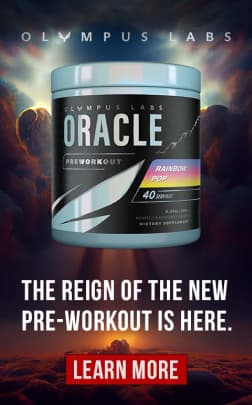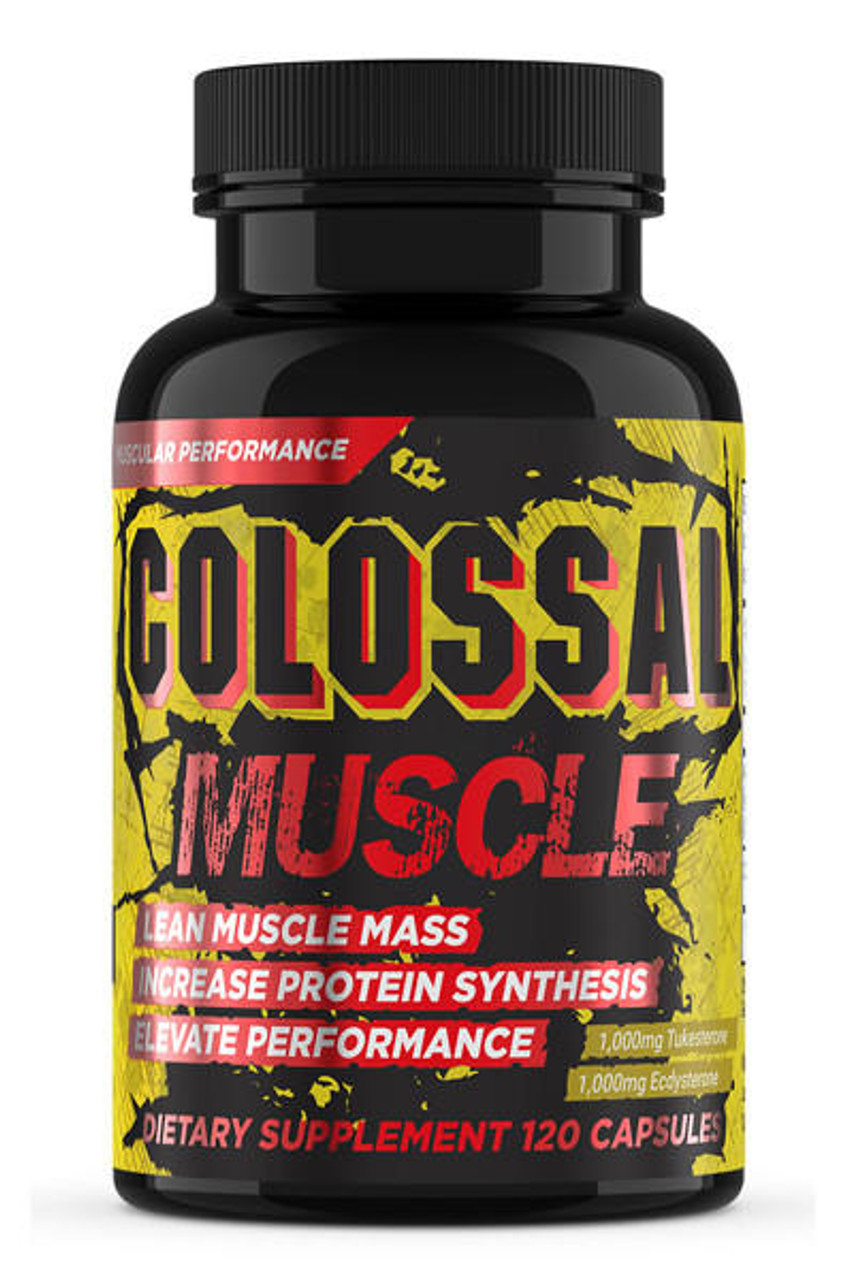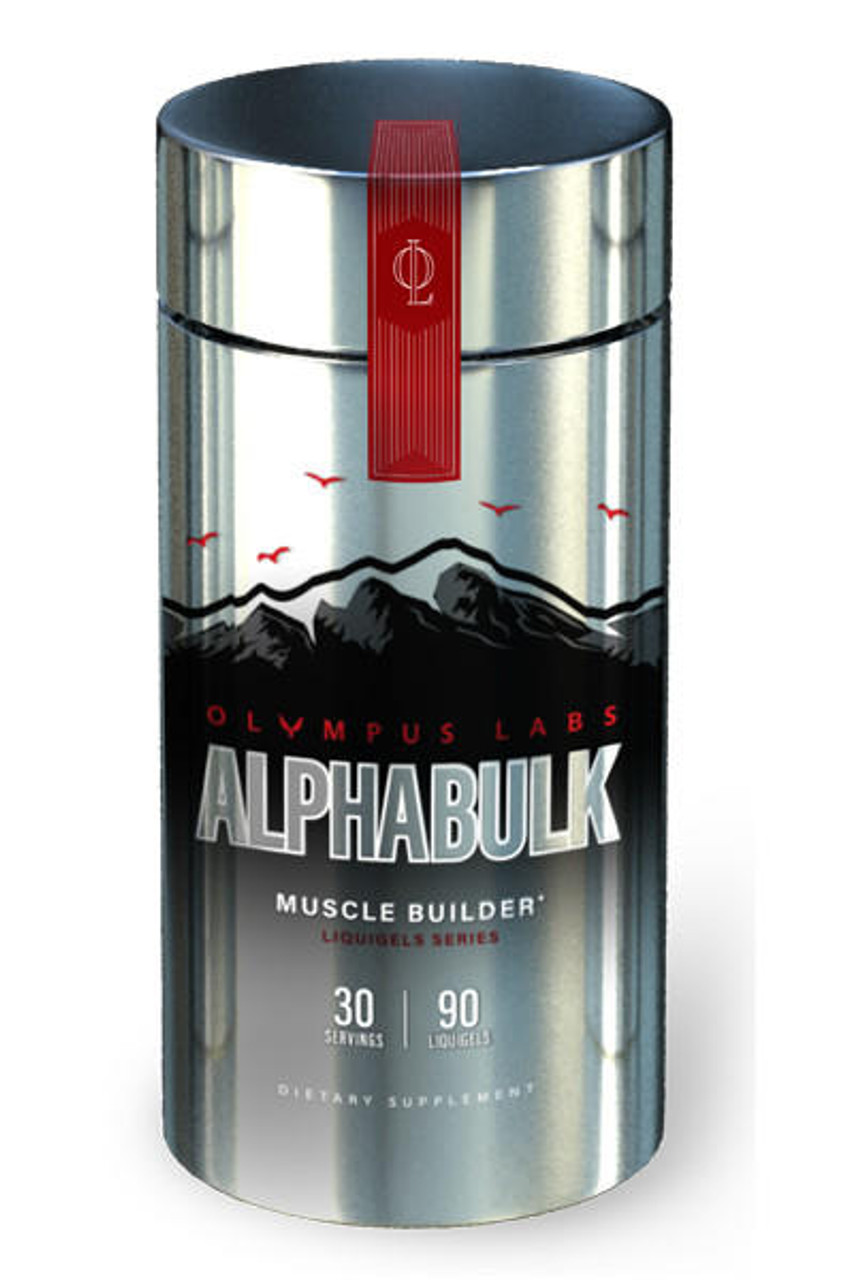Big Lats: Top 8 Exercises for Maximum Width and Thickness
Posted by Leonard Shemtob on May 06, 2025
Introduction
Are you tired of having a narrow upper body? Want to develop that impressive V-taper that turns heads at the gym? Building big lats is the key to transforming your physique from ordinary to extraordinary. The latissimus dorsi muscles (or "lats" for short) are the biggest muscles in your back and play a crucial role in creating that coveted wide appearance.
This guide will show you exactly how to build bigger and stronger lats with proven exercises, supplement recommendations, and expert training strategies.
Short Summary:
- Big lats create the impressive V-shaped torso that defines an athletic physique
- Proper lat training combines both width and thickness exercises for complete development
- The right combination of pulling movements targets all areas of the latissimus dorsi muscles
- Consistent training with progressive overload is essential for continuous lat growth
- Mind-muscle connection dramatically improves the effectiveness of lat exercises
- Begin your transformation now with the Best Natural Strength and Muscle Building Supplement for serious size, power, and muscle gains!
Understanding Lat Anatomy
The latissimus dorsi muscles are the largest muscles in your back, spanning from your mid-back all the way to your waist. These fan-shaped muscles attach to your upper arm bones (humerus), spine, and pelvis. They work alongside your shoulder muscles to provide stability to the shoulder joint. Your lats' primary function is to pull your arms down and back, and they play a key role in many pulling movements like pull ups and rows.
Well developed lats create that desirable V-shaped torso by widening your upper body while creating the appearance of a narrower waist. When properly trained, these powerful back muscles improve your posture, increase your pulling strength, and enhance your overall upper body aesthetics. Any personal trainer will tell you that developing your lats is essential for both aesthetic and functional purposes.
Benefits of Building Bigger Lats
Developing strong, well developed lats offers numerous advantages beyond just looking good:
- Improved V-taper appearance - Big lats create the illusion of broader shoulders and a narrower waist
- Enhanced pulling strength - Strong lats boost performance in deadlifts, rows, and other compound exercises
- Better posture - Well-developed back muscles help maintain proper alignment and good posture
- Increased athletic performance - Powerful lats improve performance in sports requiring pulling or rowing movements
- Balanced physique - Developing your back muscles balances your chest development for a proportional look
- Injury prevention - Strong lats provide greater shoulder joint stability, reducing injury risk
- Functional strength - The pulling power from big lats translates to real-world activities and movements
Best Lat Exercises For Width and Thickness
Building impressive lats requires targeting both width and thickness through a strategic variety of effective exercises. The following movements are the best exercises to effectively develop the latissimus dorsi muscles from all angles, creating that coveted V-shaped back that commands attention.
1. Pull-Ups:
The undisputed king of back builders! Performing pull-ups are essential for developing impressive lat width. To perform wide grip pull-ups, grab the pull up bar with an overhand grip wider than your shoulder width. From a dead hang with your arms straight, pull your body upward until your chin clears the bar, focusing on using your lats rather than your arms. Keep your core tight and slowly lower yourself to the starting position.
For beginners struggling with body weight, try negative pull ups (jumping to the top position and slowly lowering yourself) or use resistance bands for assistance.
Chin ups, which use an underhand grip, are a great exercise variation that increases bicep activation while still effectively targeting the lats. Any personal trainer will confirm that body weight exercises like pull-ups should be a core component of any workout routine focused on back development.
2. Lat Pulldowns:
Lat Pulldowns are the perfect alternative for those still building toward full pull-ups. Sit at the cable row machine with your knees secured under the pads. Grab the bar with a wide overhand grip, slightly wider than shoulder width. With your core engaged and a slight bend in your back, pull the bar down to your upper chest while focusing on using your lats.
Slowly return to the initial position with full arm extension. This movement directly targets your latissimus dorsi muscles and allows precise control of the resistance, making it an excellent option for both beginners and advanced lifters looking to isolate their lats for maximum growth.
3. Barbell Rows:
A fundamental exercise for developing thick, powerful lats. With feet shoulder-width apart, bend at your hips and knees to grasp a barbell with an overhand grip. Maintain a flat back with your core tight, then pull the weight toward your lower chest/upper abs.
Focus on squeezing your shoulder blades together and engaging your lats at the top of the movement before slowly lowering the weight back to the starting position in a controlled manner.
This compound movement not only builds impressive back thickness but also strengthens your core, improves posture, and enhances overall pulling power for other exercises like the barbell deadlift.
4. Dumbbell Rows:
This one-arm variation allows for greater range of motion to fully develop your lats. To perform Dumbbell Rows, place one knee and hand on a bench with your other foot planted firmly on the floor. With your back parallel to the ground, grab a dumbbell with your free hand. Pull the weight up toward your hip while keeping your elbow close to your body.
Focus on retracting your shoulder blade and engaging your lat throughout the full range of motion before slowly returning to the starting position. This unilateral movement helps correct strength imbalances between sides while creating an intense mind-muscle connection with each lat individually.
5. T-Bar Rows:
Perfect for targeting the middle portion of your lats. Position yourself on a T-bar row machine or set up a barbell in a corner with a V-handle attachment. Bend at your hips with a flat back and grab the handles.
Pull the weight toward your lower chest while keeping your elbows tight to your sides. Squeeze your lats hard at the top of the movement before slowly returning to the starting position with arms fully extended.
When performing this exercise, maintain a straight line from your head to your hips throughout the movement to maximize lat engagement while protecting your spine. This is a great exercise for adding thickness to your upper back.
6. Straight-Arm Pulldowns:
This isolation movement directly targets your lats while minimizing bicep involvement. Stand facing a cable pulley with a rope or straight bar attachment. Grab the attachment with arms fully extended at shoulder height. Keeping your arms straight with just a slight bend in your elbows, pull the weight down in an arc motion until your hands reach your thighs.
Maintain proper alignment throughout by keeping your core engaged and your back straight. This exercise is excellent for developing the mind-muscle connection with your lats and serves as both an effective warm-up and a finishing movement to fully exhaust these muscles.
7. Meadows Rows:
Named after the late bodybuilding legend John Meadows, this specialized row variation places unique tension on the lats from a different angle. By using a landmine setup and positioning your body parallel to the bar, you create an arc-like pulling path that intensely engages the lower lats.
This movement is particularly effective for developing the often-neglected lower portion of the latissimus dorsi muscles. The unique angle helps create three-dimensional back development that stands out both from the front and side.
8. Pullovers:
One of the few pulling exercises that stretches your lats under load, creating a powerful growth stimulus. Whether using a dumbbell or machine, this movement trains your lats through their full function of shoulder extension while expanding your ribcage. Lie across a bench with only your upper back and shoulder blades making contact.
Holding a dumbbell with both hands, start with your arms extended above your chest, then lower the weight in an arc behind your head while maintaining a slight bend in your elbows.
Feel the stretch in your lats at the bottom position before using them to pull the weight back to the starting position. Regularly incorporating pullovers into your routine develops that sweeping lat appearance that creates an impressive physique from all angles.
Maximizing Your Lat Development
To maximize your lat development, incorporate a mix of these exercises into your workout routine, focusing on proper form, progressive overload, and establishing a strong mind-muscle connection with your latissimus dorsi muscles.
Alternate between exercises that emphasize width and those that build thickness for complete development of these shoulder muscles that create the coveted V-taper physique.
Common Lat Training Mistakes
Avoid these frequent errors that limit your lat development:
1. Using too much bicep - Many lifters rely too heavily on arm strength rather than engaging their lats properly.
2. Insufficient range of motion - Not fully extending your arms limits lat activation and growth potential.
3. Poor scapular movement - Failing to retract your shoulder blades reduces lat engagement.
4. Excessive weight - Lifting too heavy compromises form and reduces lat stimulation.
5. Neglecting mind-muscle connection - Not focusing on feeling your lats working during exercises.
6. Limited exercise variety - Relying on the same few movements limits complete lat development.
7. Improper pulling angle - Not varying the direction of pull prevents full lat stimulation.
Best Supplements for Lat Development
Anafuse by Vital Alchemy
Anafuse combines natural anabolic compounds with absorption enhancers to support lean muscle growth, particularly in the back. This supplement helps optimize your muscle building environment for maximum lat development. Formulated specifically to maximize muscle protein synthesis in large muscle groups, Anafuse can help transform your back from ordinary to extraordinary.
Key Benefits:
- Promotes natural lean muscle growth with plant-based compounds
- Enhances nutrient absorption through Bioperine® technology
- Supports optimal hormonal environment for muscle development
- Improves recovery between intense lat training sessions
- Enhances protein synthesis for better back muscle development
- Provides antioxidant support through Quercetin and Epicatechin
- Helps reduce exercise-induced inflammation in large muscle groups
- Supports overall anabolic environment without hormonal side effects
Key Ingredients:
- Ajuga Turkestanica Extract (Turkesterone)
- Eriobotrya Japonica Extract
- Epicatechin
- HICA
- Vitamin D3
- Quercetin
Colossal Muscle by Hard Rock Supplements
Colossal Muscle consists of a powerful formula featuring two key ingredients at optimal dosages. These plant-based compounds have been shown to support protein synthesis and nitrogen retention, helping you build thicker, wider lats without the side effects of traditional anabolics.
Key Benefits:
- Provides clinical dosages of two powerful plant anabolic compounds
- Promotes enhanced protein synthesis specific to large muscle groups like lats
- Supports nitrogen retention for improved recovery and growth
- Helps increase strength for progressive overload in back exercises
- Enhances workout performance and training capacity
- Promotes natural anabolic activity without hormonal side effects
- Supports lean muscle tissue development particularly in the back
- Helps improve overall training recovery between intense workouts
Key Ingredients:
- Ajuga Turkestanica Extract (Turkesterone)
- 20-Hydroxyecdysone (Ecdysterone)
Pepti-Bolic by SNS
Pepti-Bolic delivers a powerful combination of PeptiStrong™ Fava Bean Hydrolysate and DL185™ Dileucine to maximize muscle protein synthesis and recovery. This supplement is particularly effective for back training, as the latissimus dorsi muscles require significant protein utilization for growth. Formulated to support strength and hypertrophy, this specialized peptide blend enhances lat activation and aids in improving muscle-building potential.
Key Benefits:
- Accelerates muscle protein synthesis specific to large muscle groups
- Enhances leucine availability for better anabolic signaling
- Supports faster recovery between intense back training sessions
- Optimizes nutrient timing with pre/post workout dosing protocol
- Provides plant-based muscle building support (vegan-friendly)
- Helps improve overall training performance and capacity
- Reduces muscle soreness after intense back workouts
Key Ingredients:
- PeptiStrong™
- DL185™ Dileucine
AlphaBulk by Olympus Labs
AlphaBulk's comprehensive formula features potent combination of natural anabolic ingredients. These ingredients work synergistically to enhance nutrient partitioning, increase workout performance, and support recovery—all crucial factors for developing impressive lats.
Key Benefits:
- Enhances nutrient partitioning for better muscle-building results
- Improves workout energy and performance during back training
- Supports optimal testosterone levels for anabolic environment
- Provides adaptogenic benefits through ginseng compounds
- Enhances recovery between intense training sessions
- Promotes better blood flow to working muscles during exercise
- Supports overall hormonal balance for improved results
- Liquid delivery system ensures optimal absorption and bioavailability
Key Ingredients:
- α-Cedrene
- PhytoFUSE™ - Penax Ginseng Extract
- α-Ionone
- PhytoFUSE™ - Kaempferia Parviflora Extract
Mandro the Giant Gold Stack
Mandro the Giant Gold Stack is an advanced prohormone cycle that combines Super Mandro and Andro the Giant (1-Andro and 4-Andro) along with liposomal technology for enhanced bioavailability. This potent combination supports dramatic increases in strength and size, particularly in large muscle groups like the lats. This stack can help provide far more optimal results for experienced users looking to take their back development to the next level.
Disclaimer: This supplement stack is only recommended for users with 2+ years of training, dieting, and supplement cycling experience.
Key Benefits:
- Provides maximum support for strength and size gains in large muscle groups
- Enhances protein synthesis and nitrogen retention
- Supports dramatic increases in training capacity and performance
- Promotes accelerated recovery between intense workouts
- Helps improve nutrient utilization for better overall results
- Supports optimal hormonal environment for muscle growth
- Liposomal technology ensures maximum bioavailability
- Helps break through training plateaus for continued progress
Key Ingredients:
- 1-Andro (Super Mandro)
- 4-Andro (Andro the Giant)
Pro Tips for Optimal Lat Development
Maximize your gains with these effective training tips and techniques:
-
Pre-exhaust your lats - Begin with isolation movements like straight-arm pulldowns before compound exercises
-
Vary your grip positions - Alternate between wide, medium, and narrow grips to target different parts of your lats
-
Implement time under tension - Slow down your reps (especially the negative portion) to increase muscle stimulation
-
Use activation techniques - Prior to heavy sets, perform light sets focusing purely on feeling your lats contract
-
Train from different angles - Include horizontal pulls (rows), vertical pulls (pulldowns), and diagonal pulls
-
Prioritize back training - Train lats when you're fresh by scheduling back workouts early in your weekly routine
-
Add partial reps - After reaching failure, perform partial reps at the most contracted position to extend the set
-
Incorporate drop sets - Reduce weight when you reach failure and continue with additional reps
-
Use a weight belt - For weighted pull ups, a weight belt allows you to continue progressive overload safely
-
Include deadstop training - Perform rows with a complete pause at the bottom to eliminate momentum
-
Utilize resistance bands - Add accommodating resistance to standard exercises for unique stimulation
-
Maintain proper shoulder position - Keep shoulders down and back throughout all lat movements
-
Add weighted end variations - Attach additional resistance to the end range of motion for increased tension
-
Adapt to your fitness level - Choose exercises that challenge you appropriately based on your current abilities
Nutrition for Lat Growth
Proper nutrition is essential for building impressive lats. Here are some tips to help you fuel your body for maximum back growth:
1. Protein Intake: Consume 1.6-2.2g of protein per kg of bodyweight daily (0.7-1g per pound)
2. Caloric Surplus: Eat 300-500 calories above maintenance for optimal muscle growth
3. Carbohydrate Timing: Consume 25-50g of fast-digesting carbs pre and post-workout
4. Hydration: Drink at least 3-4 liters (100-135oz) of water daily
5. Essential Fats: Include 0.5-0.7g/kg of healthy fats daily for hormonal support
6. Recovery Nutrients: Focus on foods rich in magnesium, zinc, and potassium
7. Meal Frequency: Distribute protein intake across 4-6 meals daily
8.Night Nutrition: Consider slow-digesting protein before bed to support overnight recovery
Progressive Overload for Lat Training
To continually stimulate growth in your lats, implement these progressive overload techniques:
- Increase Weight - The most straightforward approach is to add weight when you can complete the target reps with good form
- Add Reps - Before increasing weight, aim to add 1-2 reps per set with your current weight
- Decrease Rest Periods - Gradually reduce rest between sets from 2-3 minutes down to 60-90 seconds
- Increase Time Under Tension - Slow down the eccentric (lowering) phase from 2 seconds to 3-4 seconds
- Add Volume - Increase total sets per workout from 12 to 16-20 over several weeks
- Improve Range of Motion - Focus on achieving a fuller stretch and more complete contraction
- Incorporate Advanced Techniques - Add drop sets, mechanical drop sets, and rest-pause training
- Frequency Progression - Gradually increase lat training from 1-2 times weekly to 3-4 sessions
Track your progress by logging all workouts and taking measurements of your back width and thickness monthly.
Transform Your Physique With Big Lats
Building impressive lat muscles isn't just about looking better—it's about creating a stronger, more functional body. The latissimus dorsi muscles play a crucial role in upper body strength, posture, and athletic performance. By implementing the exercises, training techniques, and supplement strategies outlined in this guide, you'll develop the wide, thick back that defines an truly impressive physique.
Start your lat transformation today by incorporating these proven methods into your training program. Remember that consistency is key—stick with these strategies for at least 8-12 weeks while progressively overloading your muscles.
Track your progress, adjust as needed, and watch as your back transforms from ordinary to extraordinary!
Written and Sponsored by Leonard Shemtob
Leonard Shemtob is President of Strong Supplements and a published author. Leonard has been in the supplement space for over 20 years, specializing in fitness supplements and nutrition. Leonard appears on many podcasts, written over 100 articles about supplements and has studied nutrition, supplementation and bodybuilding.
Leonard's articles have been published in many top publications around the web. Leonard enjoys weight training, playing basketball and yoga, and also enjoys hiking. In his free time he studies and works on improving himself. For more detailed information, visit his official blog.

- Lehman, G. J., Buchan, D. D., Lundy, A., Myers, N., & Nalborczyk, A. (2004). Variations in muscle activation levels during traditional latissimus dorsi weight training exercises: An experimental study. Dynamic medicine : DM, 3(1), 4. https://doi.org/10.1186/1476-5918-3-4
- Lusk, S. J., Hale, B. D., & Russell, D. M. (2010). Grip width and forearm orientation effects on muscle activity during the lat pull-down. Journal of strength and conditioning research, 24(7), 1895–1900. https://doi.org/10.1519/JSC.0b013e3181ddb0ab
- Schoenfeld, B. J., Contreras, B., Vigotsky, A. D., & Peterson, M. (2016). Differential Effects of Heavy Versus Moderate Loads on Measures of Strength and Hypertrophy in Resistance-Trained Men. Journal of sports science & medicine, 15(4), 715–722. https://pubmed.ncbi.nlm.nih.gov/27928218/
- Signorile, J. F., Zink, A. J., & Szwed, S. P. (2002). A comparative electromyographical investigation of muscle utilization patterns using various hand positions during the lat pull-down. Journal of strength and conditioning research, 16(4), 539–546. https://pubmed.ncbi.nlm.nih.gov/12423182/
- Snyder, B. J., & Leech, J. R. (2009). Voluntary increase in latissimus dorsi muscle activity during the lat pull-down following expert instruction. Journal of strength and conditioning research, 23(8), 2204–2209. https://doi.org/10.1519/JSC.0b013e3181bb7213
- DA Silva, B. V. C., Branco, D. B. T., Ide, B. N., Marocolo, M., DE Souza, H. L. R., Arriel, R. A., Oranchuk, D. J., & Mota, G. R. (2020). Comparison of High-Volume and High-Intensity Upper Body Resistance Training on Acute Neuromuscular Performance and Ratings of Perceived Exertion. International journal of exercise science, 13(1), 723–733. https://doi.org/10.70252/YSQD4148
- Schoenfeld, B. J., Ogborn, D., & Krieger, J. W. (2017). Dose-response relationship between weekly resistance training volume and increases in muscle mass: A systematic review and meta-analysis. Journal of sports sciences, 35(11), 1073–1082. https://doi.org/10.1080/02640414.2016.1210197






